Climb faster up the Alpe du Zwift: here's how to improve your time
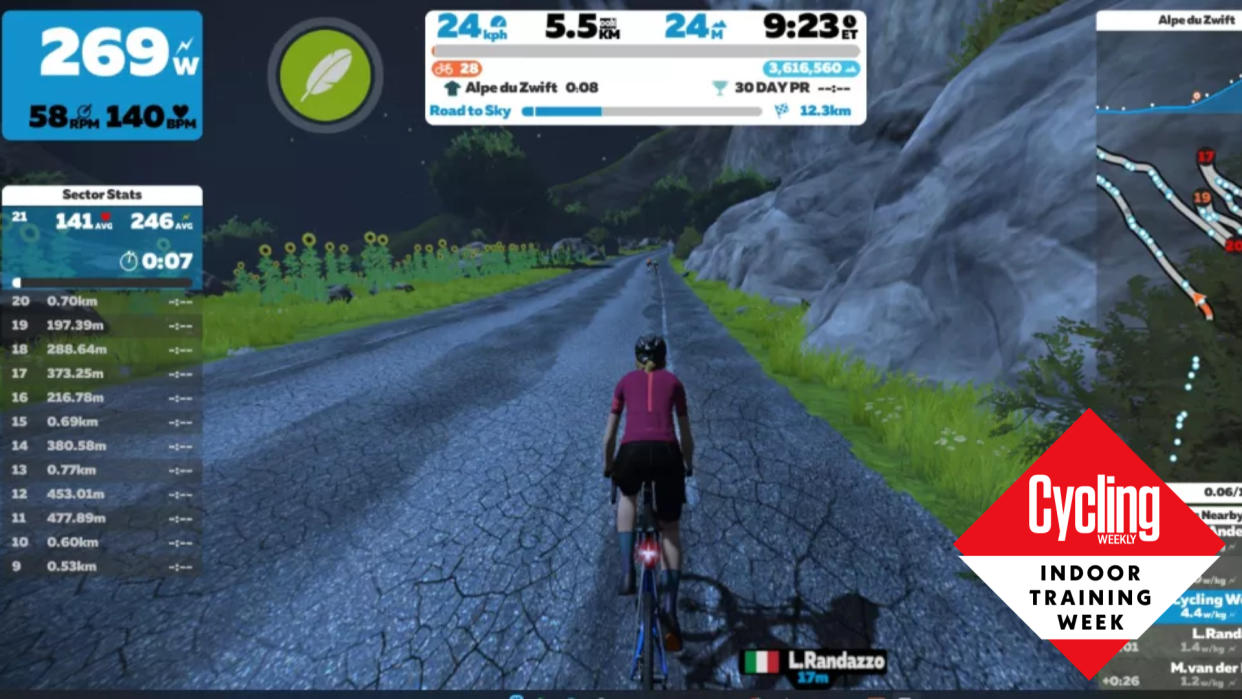
Zwift’s virtual worlds are packed with twisty ascents and taxing gradients. One of these is the Alpe du Zwift which, as you might have suspected, is based around the iconic alpine climb, the Alpe d’Huez.
Setting a PB up the Alpe du Zwift is an excellent way to challenge yourself on Zwift without entering a race. Plus retesting yourself on the virtual climb is also a useful way of tracking your fitness progress as there’s fewer variables that’ll negatively impact your time.
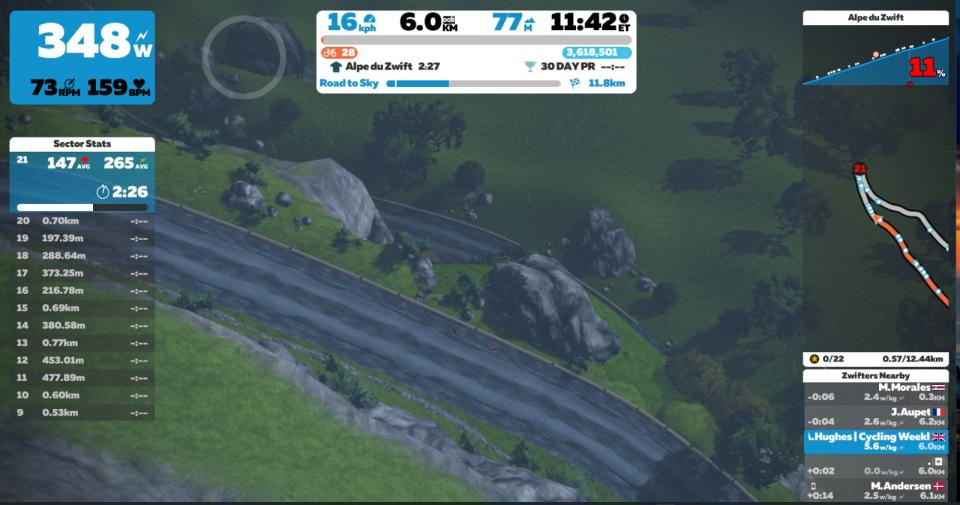
Zig-zagging your way up the 21 hairpin turns, you’ll cover 12.2km (7.59 mi) as you make your way up the 1,036m (3,399 ft) of elevation gain. This puts the average grad at 8.5%, but don’t be fooled, there are ramps of up to 14% hidden along it. Just like the real Alpe d’Huez, it’s toughie. And for many, it’s going to take a lot to nudge under the hour mark and gain one of Zwift’s achievement badges.
We’ll take you through how to train towards your PB attempt – and what to do on the day to get the most out of your fitness. Whatever time it is that you’re aiming to improve, the same advice applies – so let’s get into it.
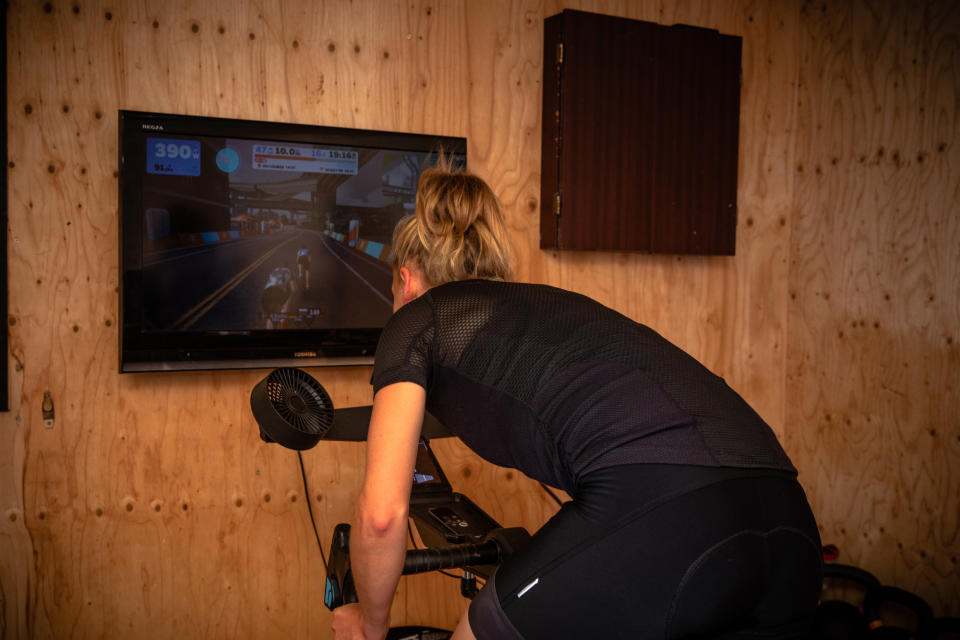
First off, let’s go over how to actually get onto the climb in the first place. After riding about the virtual roads of Zwift, you’ll soon reach level 6 and unlock the Road to Sky route in Watopia, which leads you straight to the Alpe du Zwift climb. If you’re not quite at that level, you can still join a group ride or group workout that’s held on the climb – or join a friend who is riding the route.
What to do on the day to improve your time up the Alpe du Zwift
Warm up your legs
“A warm up is definitely necessary,” says former British professional cyclist Liam Holohan of Holohan Coaching. “Include a little bit of a progression to threshold and some high cadence intervals, and that will get you ready for the effort to come.”
“It’s quite individual, though,” Holohan notes. “Some riders feel like they need to do quite a bit of riding to get going, whereas others can just do that progression to threshold and go straight into it - it’s about finding what works for you.”
Up the Alpe du Zwift climb you’re going to be wanting to sustain an effort that’s consistent across the climb, and that means you don’t want to be using the first few ramps to get your legs going.
The Road to Sky route in Watopia is the most direct route to the climb. At 19.9km (12.3mi) long, you reach the Alpe at 7.2km in, but that may not be enough time for you to properly warm up and give yourself the best shot at improving your time.
For those who find they tend to need a longer warm up, consider getting to the climb via the ‘Tour of Fire and Ice’ route which is 25.1km (15.6 mi) with 1,166m of climbing. It takes you up the Volcano KOM on the way over and you reach the Alpe at 12.9km, which is an additional 4.7km of warming up time.
Although Holohan certainly recommends not going straight into the effort, he also warns against too long a warm up.
Holohan recommends finishing your warm up between five and ten minutes before starting the effort. “If you leave it longer than 10 minutes then the benefits of the warm up start to wear off,” he says. “Five minutes is about the minimum you want to leave it, just so you’re not starting the effort with a bit of fatigue.”
Keep yourself cool
“When you’re riding inside, heat stress is a big factor in performance,” Holohan points out. “If you’re having a long warm up that heat stress is going to build up so you’re looking to minimise that.”
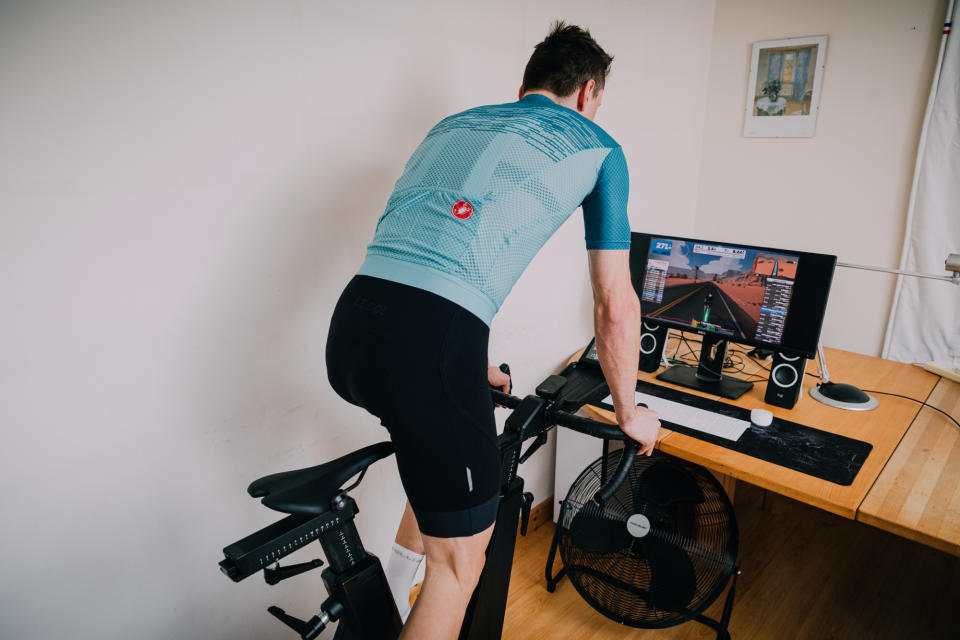
One way of doing that is by using two big fans. “I’m not talking about a little desk one that you might have in your office, I’m talking a big industrial fan to really move some air volume.
“The key way that your body cools down is by convection - like an oven, it can work the other way as well - so having that air flow is really going to help regulate that heat stress, so I’d certainly have two big fans and then just ventilate the room as best you can.”
It’s also important to think about the time of day you’re going to do the effort. “Don’t do it in the afternoon when the sun’s been shining through the window all day,” Holohan says.
“Get all the windows and doors open so you can bring some fresh air in and help ventilate the room a little more.”
Menthol is another thing that Holohan says can help reduce your core temperature. “Having menthol in your mouth gives the sensation that you’re cooler than you are,” says Holohan. “It basically just tricks the brain into thinking the body is not as hot as it is because at the end of the day it’s the brain that puts the brakes on.
“Some sports nutrition companies have cottoned onto this and have started making sports drinks with menthol in it, so that can be another option as well.”
Work out what time you’re aiming for
So you know how long the climb is (12.2km/7.59 mi) and how much climbing it packs in (1,036m/3,399 ft), but it also helps to have a goal in mind. Before you begin it’s worth working out what time you are aiming for and how much watts or watts per kilogram do you need to average to achieve that time.
The fastest male time recorded is 30:01, according to ZwiftPower, and for the women it’s 36:08. ZwiftPower has collated Alpe du Zwift segment times and you can filter by age group and weight group to find out what sort of times riders are doing that are similar to you.
Zwift has a badge for those who ride the Alpe in under an hour, so that’s another good target to aim for. On ZwiftPower you can find a graph which will give you an idea of the W/kg numbers you’ll need to be riding at to complete the climb in a given time.
Pace your effort with a negative split
Going for a negative split is the way that Holohan recommends pacing the effort. “What this means is that the first half of the ride is easier than the second half,” Holohan explains.
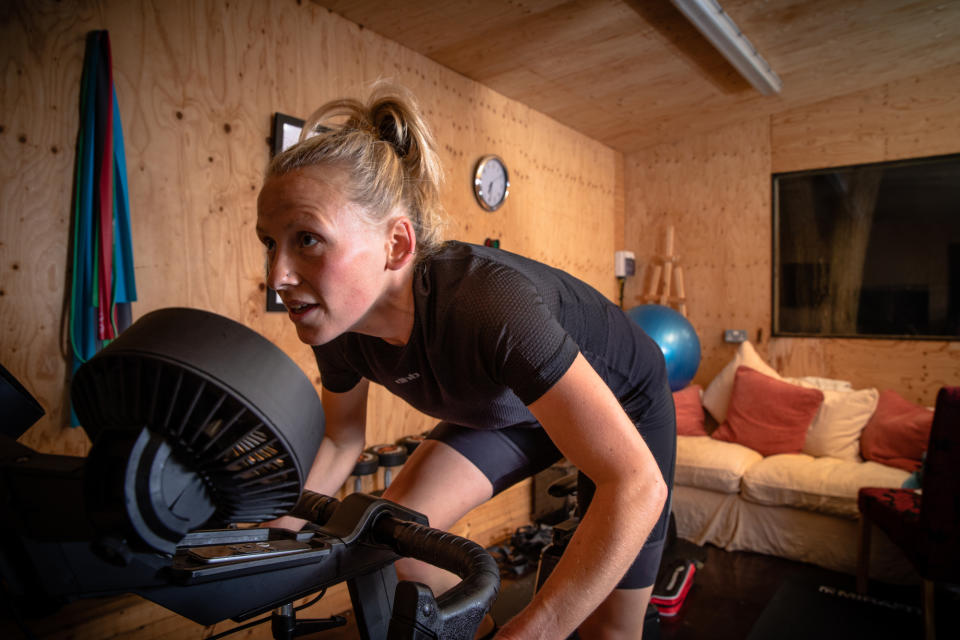
“Say the rider’s threshold is 300 watts, for example, they may start at 285 and then ramp it up so by the end they may be doing 315,” he says. “The average is 300 watts but it’s not evenly paced.”
“When you pass threshold you’re drawing into anaerobic metabolism and the lactate starts to build,” Holohan explains. “What you’re looking to do is minimise that because as soon as you go over that threshold it’s like taking out an overdraft, it’s got to be paid back.
“Now that’s fine if you do it at the end of the ride, because then you’re in the cool down. What you don’t want to do is get to the last one or two kilometres and you’ve got to pay that debt back.”
Pacing with a negative split also helps with heat stress because the harder you go the hotter you’re going to get. By leaving going hard until the second half you won’t be dealing with overheating for so much of the effort.
Fuel three hours before
Effective carb-loading ensures you’re fueled for the hard, prolonged effort ahead.
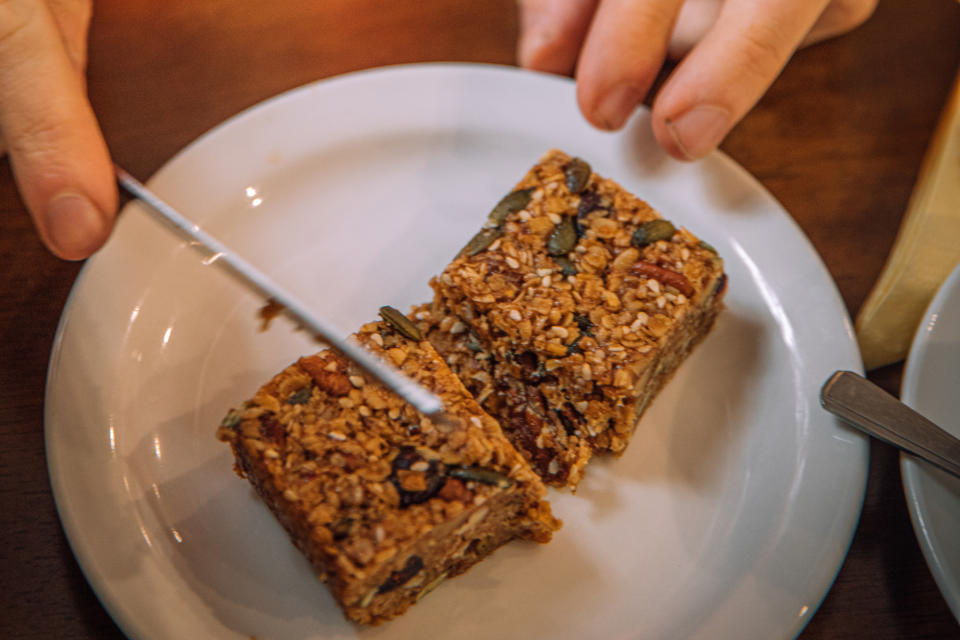
“Fueling during the effort is not needed as long if you’ve had a high carbohydrate diet in the 24 hours before,” says Holohan.
It’s recommended not to eat too close to the effort, though. “Eat three hours before because if you eat too close to it you’re probably going to be sick on your indoor trainer,” Holohan warns. Alongside avoiding that unpleasant feeling, there’s another reason to avoid a last minute snack.
“When you digest food the blood goes to the stomach, but you want the blood to be going to your legs.
“Eating three hours before ensures that the food is fully digested and you’re not going to have any gastric upset, and that your insulin and blood glucose levels are back to normal so you’re ready to do the effort.”
That said, Holohan adds that there’s good evidence which suggests that simply tasting something sweet - you don’t have to swallow it - tricks the brain into thinking you’ve got more glycogen than you actually have.
The performance enhancing effect of coffee is well established and so Holohan advises having between three and five milligrams of caffeine per kilogram of bodyweight.
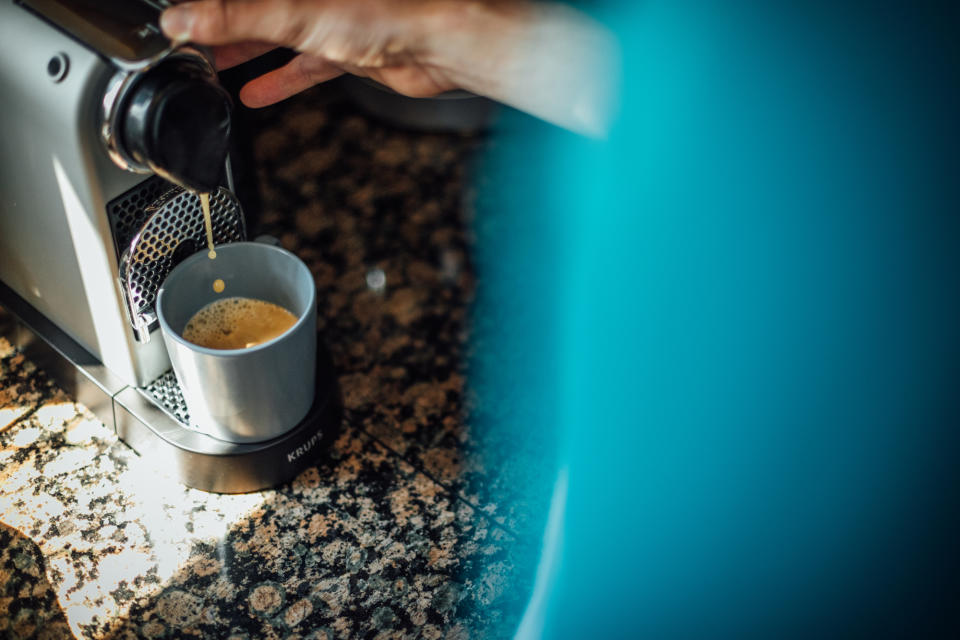
“If you’re drinking it, have it just before you start your warm up so around 30 minutes before,” he says. “If you’re taking caffeine gum, that gets into the system a lot quicker so you can take it later.”
Pick a lightweight bike
For most courses on Zwift, aero rules the roost – but not so with the Alpe. This is one of the few times that you’ll be fastest opting for lightweight over aero.
The ultimate fastest setup is combining the Specialized Aethos frame with the Lightweight Meilenstein wheels. But the frame is only unlocked at level 34 and costs 923,000 drops, while the Meilensteins can only be gotten as a random prize when summiting the alpe – so they both take a pretty heavy investment in the game to get.
A more widely attainable pairing is the Cannondale EVO frame (213,00 drops) and the Enve SES 3.4 wheels (191,700). Eric Schlange of Zwift Insider has worked out that this pairing will save you 60.5 seconds over the basic Zwift bike setup, compared to the 73 second saving the ultimate setup gives you – so the greatest gains do come early on.
How to train towards improving your time on the Alpe du Zwift
Be consistent
“The number one thing is to be consistent in your training and to have a plan,” Holohan says. “That’s probably the thing most amateurs get wrong, in that the frequency and volume of their training is very up and down because there’s plenty of curveballs in life.”
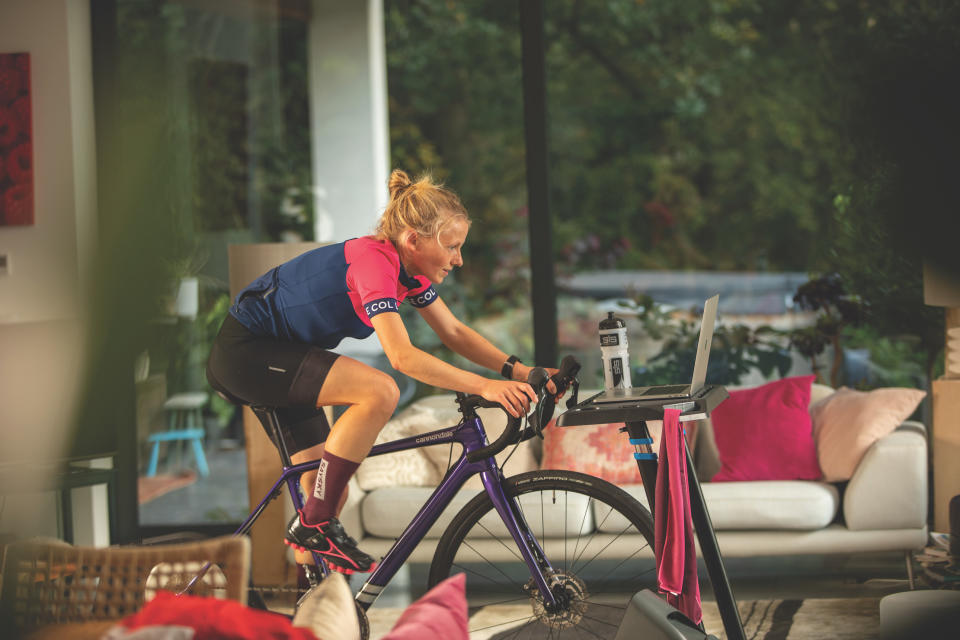
It certainly helps to have a goal in mind, as you do here with aiming to improve your time on Alpe du Zwift. Work out and write down a training plan for the week ahead rather than just choosing a session on the day, and ensure you have your kit ready the night before rather than rushing around exhausting yourself when you’re supposed to be riding.
But still rest and recover
“Ensure that you put as much into the rest and recovery as you do the training,” Holohan recommends.
Rest is when your body repairs itself and builds itself back up, “it’s when you get faster”, Holohan points out. There is lots you can do to optimise the adaptation process when you're off the bike, but effective rest and recovery mainly revolves around sleep and nutrition.
Focus on training your aerobic capacity
“The effort is an aerobic one [>20minutes] so you’re looking to develop your aerobic engine,” says Holohan. “I wouldn’t be doing any anaerobic training, those very short sprints and high intensity intervals.
“You’ve got to be specific, so you need to be working the energy system that you’re going to be using for the effort – but still, that doesn’t mean you should do it all the time.
“Training has to reflect the needs of the athlete, but as a general rule of thumb around 80% of your training should be easy at zone 2 and 20% quite hard, working at the specific intensity for the effort, so FTP in this case,” says Holohan.
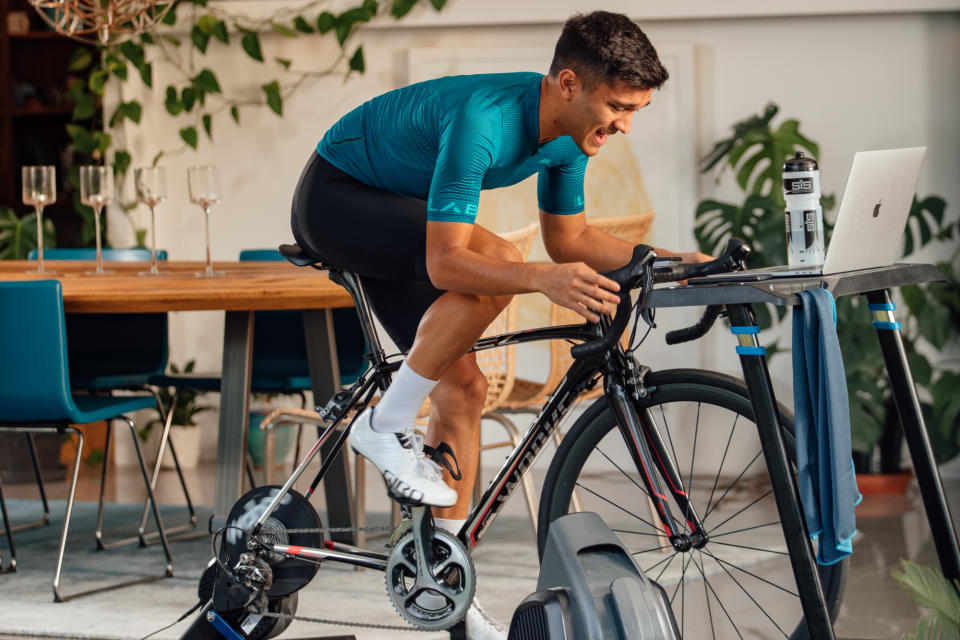
A good session to do as part of that 20% hard portion of your training would be working on your maximal aerobic power. “Start with a progressive warm up and then do between three and five, five minute intervals at V02 max power, with equal recoveries,” Holohan advises.
Another would be working at threshold. “Again, begin with a progressive warm up and then you could do three to four 10 minute intervals at your target power for the Alpe du Zwift, with three to five minute recoveries between.”
Eat and drink healthily
“The Alpe du Zwift is a test of power to weight,” Holohan points out. As well as increasing your power output, reducing your mass to improve your power to weight ratio will help you shave off some time.
“By adopting a healthy balanced diet; cutting back on processed food and alcohol/fizzy drinks, most could drop a kilogram or two without losing any of that all important power,” Holohan notes.
Treating yourself every now and then is certainly a mood booster and if you’re happy you’re more likely going to want to get out on your bike, and regularly too. It’s all about finding a balance.
If you have dropped your weight, remember to adjust the weight of your in-game avatar.

